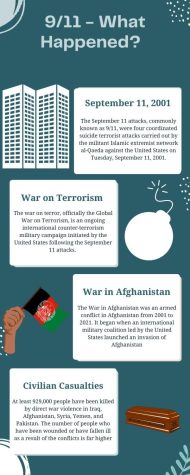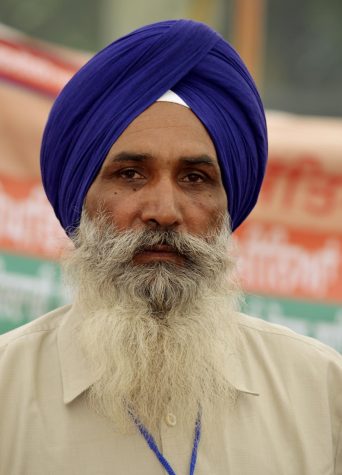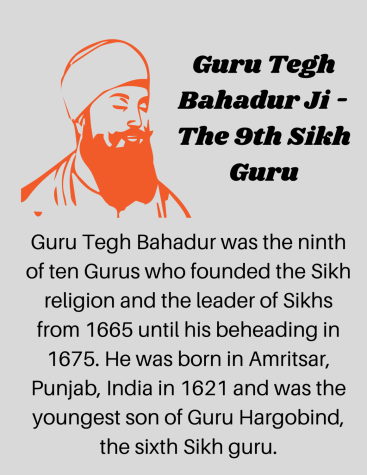The first murder victim of a 9/11-related Islamophobic hate crime was not a Muslim. He was a father, son, and entrepreneur. On September 15, 2001, according to CNN, a Sikh man named Balbir Singh Sodhi was shot to death while planting flowers on his property.
The September 11th terrorist attacks wreaked havoc in the United States, with nearly 3,000 people dead and many more fatally injured, it was not only a day of chaos, but it was a day that changed the U.S. forever.
After that, the U.S. waged war on terrorism and deepened chasms in the Middle East– yet, for many Americans, a war on terrorism meant something entirely different: a war against Islam. Since then, millions of Muslims and other minority groups have been targeted, many of whom still live in fear today.
Unfortunately, there are many more stories just like Sodhi’s. Sikhs are a religious minority originating from Northern India and are often targeted because of their outward appearance. Sikhs maintain uncut hair, known as kesh, and according to Sikh Coalition data, 99% of people wearing turbans in the United States are Sikhs.

“Sikh people are obviously targeted for one of three reasons: brown skin, the fact that they wear turbans, or the fact that they have a beard. In most scenarios, it’s a combination of all three factors,” said Jasveer Singh, the Senior Press Officer for the Sikh Press Association. “In fact, there’s a popular case in the U.K. where a Sikh man, [Sarandev Singh Bhambra], was assaulted with a machete by a white supremacist in a supermarket simply because he was thought to be an Islamic extremist. Because of cases like this, the Sikh Press Association was founded.”
According to the Sikh Coalition, Sikh-Americans are six times more likely to face hate victimizations, yet mainstream media rarely covers Sikh stories. Because of the lack of coverage, most people can hardly identify Sikhs, let alone differentiate them from other minority communities.
When the media does, on occasion, release Sikh-related coverage, it often victimizes the Sikh community. The media only chooses to cover the stories of victims of hate and often disregards the positive aspects of the community.
“So many charity organizations are run by the Sikh population. Khalsa Aid, the Hemkunt Foundation, etc. [The Sikh community] hosted many langar [free vegetarian food] drives during the pandemic. Sikh gurdwaras [Sikh place of worship] have donated hundreds of thousands of dollars annually to homeless shelters across the nation. Yet, the only time we’re featured in a news story is if someone in our community has been killed,” said Pushpinder Kaur, one of the founders and principal of Guru Nanak Khalsa School. “There are many Sikh doctors, entrepreneurs, sports champions, and more inspirational figures, but they’re never covered in the news.”
Sikhs wear turbans as a symbol of their identity, so people can spot them in a crowd and go to them for help. A turban is a symbol of royalty, trustworthiness, and safety. Yet, when people see a Sikh man or woman wearing a turban today, they think ‘Osama Bin Laden’, ‘terrorist,’ or ‘Islamic extremist.’
Sikh-Americans have a colorful history of being descendants of a warrior class, known for selfless seva

(service) in India and across the globe. Despite the tireless work of humanitarian organizations like Khalsa Aid and the Hemkunt foundation, Sikhs aren’t positively covered in the news.
The unfortunate truth is that many Sikh children rarely see themselves represented on T.V., in the news, or in their curriculum.
According to a fact sheet from the Sikh Coalition, a 2010 Sikh Coalition survey revealed that 69% of turban-wearing Sikh students in the Bay Area have suffered bullying and harassment because of their religion and that 30% of them had been hit or involuntarily touched because of their turbans.
In 2008, according to nj.com, 16-year-old Jaskirat Singh’s turban was set on fire by a fellow student in a New Jersey school. In 2007, according to The New York Times, 15-year-old Harpal Singh Vacher’s hair was forcibly cut by a fellow student in New York City, and according to the New York Daily News, 14-year-old Gurwinder Singh was attacked by a mob of students in the classroom. Bullying and hate are still a reality for many young Sikhs in the United States.

“Unfortunately, I never felt like I was represented. When I learned about people like Rupi Kaur, HumblethePoet, Waris Ahluwalia, and Lilly Singh, I definitely resonated with them and was glad to see the representation,” said Darshleen Kaur, a member of SikhTeens and the founder of the Rahao Podcast. “SikhTeens was created for students like myself, to find a community amongst other Sikhs their age who share common interests, stories, beliefs, and experiences.”
Despite the tireless efforts of Sikh Coalition, the Jakara Movement, the Sikh Press Association, and other Sikh organizations, Sikhs still don’t see themselves represented in the curriculum.
“We have a full ethnic studies curriculum at our school, but many students still don’t know what a Sikh is,” said junior Natalie Su.
“In high school, we were learning about India in our World History class, and on the screen, there was a picture of the ninth Sikh guru, Guru Tegh Bahadur ji, and the caption underneath the picture said ‘an Indian heretic,’” Darshleen Kaur said. “It was disappointing to see that such an important figure in the Sikh religion has been misrepresented.”

On the rare occasion that schools cover Indian or Sikh history, the curriculum is often incorrect. Many students have complained of similar issues in their school’s curriculum, citing that Sikhism is often regarded as a sect of Hinduism or Islam by teachers, despite it being its own independent religion.
The Carlmont Ethnic Studies curriculum doesn’t even mention Sikhism, despite it being the fifth largest religion in the world with hundreds of thousands of Sikhs residing in the Bay Area.
“The resources are there. I’ve written many books, my coworkers have written many textbooks on Sikhism. We’re just asking that schools dedicate time to teaching students about Sikhs. We’re asking for one class period dedicated to informing students about Sikhism,” Pushpinder Kaur said. “Even when Sikhism is in the curriculum, it accounts for maybe a paragraph in a 500-page textbook. It’s so easy for students to skip over that section.”
The point of ethnic studies classes is to raise general awareness about different minority groups in the U.S. and around the world. The curriculum over-teaches African-American, Asian, Hispanic, and Latin history but can’t find the time to cover the basics of Sikhism.
When asked to describe a Sikh, a group of Carlmont sophomores was unable to answer the question.

“Sikh history isn’t part of our curriculum. It would’ve been useful to learn about that in class. Our school teaches us a lot about racism impacting the black, Hispanic, and to some extent, Asian communities in the United States. I think every aspect of our education system is trying so hard to include diversity and inclusivity in our history, English, and even some elective curriculums, but it’s surprising to learn that our school doesn’t cover most minority groups,” said an unnamed Carlmont student*. “It’s interesting that we don’t cover these subjects in schools and then we act so surprised when we see people harassed for their race or religious identities. I think ignorance is the biggest reason people like Sikhs are bullied or attacked, and our education system is to be blamed for their incompetence.”
Guru Nanak Khalsa School is now teaching a third generation of Sikh-American students about their Sikh heritage and history. The curriculum includes learning the Punjabi language, reinforcing religious values, and learning ways to cope and deal with bullying in schools.
No 10-year-old child should have to learn about how to protect themself from an attacker. No child should have to learn how to justify their identity because of a system’s ignorance. No child should be warned that they will be discriminated against for enforcing their First Amendment right to practice their religion.
The solution is simple: amplify Sikh voices, represent Sikh-Americans, and cover Sikh success stories instead of constantly victimizing them. It’s time for the Carlmont community, and other California high schools, to recognize that hate ends when knowledge spreads.
*In accordance with Carlmont Media’s Anonymous Sourcing Policy, the name of the student has been changed to preserve the subject’s anonymity due to the critical nature of their views towards Carlmont’s curriculum.



